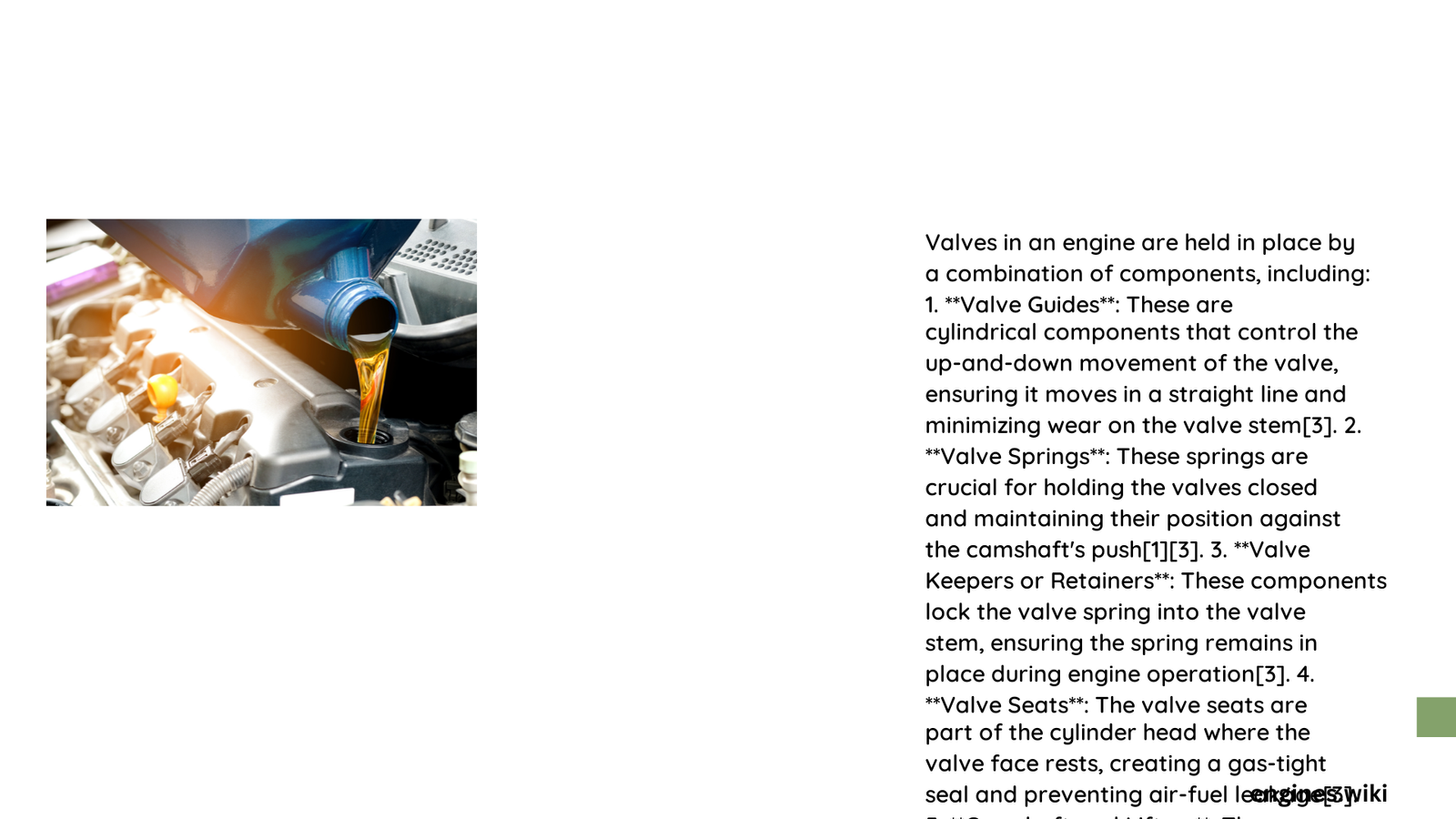In the intricate world of internal combustion engines, multiple precision components work together to hold valves securely in place, ensuring optimal engine performance and preventing catastrophic mechanical failures. The complex interaction between valve springs, retainers, and cylinder head design creates a sophisticated system that maintains valve positioning, controls valve movement, and manages the critical timing of engine operations.
What Are the Primary Components That Hold Valves in Position?
Valve Springs: The Core Retention Mechanism
Valve springs serve as the primary mechanism for holding valves in place and controlling their movement. These critical components:
- Provide consistent force to return valves to closed position
- Withstand extreme temperatures and mechanical stress
- Maintain precise valve lash and alignment
Key Characteristics of Valve Springs
| Material | Typical Specifications | Performance Attributes |
|---|---|---|
| Chrome-Silicon Alloy | Spring Rate: 350-450 lbs/in | High Durability |
| Chrome-Vanadium Steel | Free Length: 2-3 inches | Excellent Fatigue Resistance |
| Titanium Alloy | Installed Height: 1.7-2.0 inches | Lightweight Performance |
How Do Valve Retainers Contribute to Valve Positioning?
Valve retainers work in conjunction with valve springs to secure and stabilize valve movement. These components:
- Connect valve springs to valve stems
- Distribute mechanical loads evenly
- Prevent lateral valve movement
- Ensure precise valve alignment
Material Composition of Valve Retainers
- Steel Alloys
- High strength-to-weight ratio
- Excellent durability
-
Cost-effective manufacturing
-
Titanium Alloys
- Ultralight construction
- Superior performance in high-stress environments
- Reduced reciprocating mass
What Role Does the Cylinder Head Play in Valve Retention?
The cylinder head provides the critical structural framework for valve positioning, offering:
- Mounting points for valve assemblies
- Precise valve seat surfaces
- Structural integrity for valve train components
Cylinder Head Design Considerations
- Valve seat material compatibility
- Thermal management capabilities
- Precision machining tolerances
- Structural reinforcement
What Challenges Affect Valve Retention in High-Performance Engines?
High-performance engines present unique challenges for valve retention mechanisms:
- Increased mechanical stress
- Higher operating temperatures
- More aggressive camshaft profiles
- Reduced component tolerances
Performance Impact Metrics
- 10% valve spring rate reduction can decrease engine power by 2-3%
- Tight tolerance requirements (±0.001 inches for valve stem)
- Critical maintenance intervals
How Can Proper Valve Retention Be Maintained?
Effective valve retention requires:
- Regular inspection of valve train components
- Precise measurement of spring rates
- Replacement of worn components
- Use of specialized maintenance tools
Conclusion

Understanding the intricate mechanisms that hold valves in place reveals the remarkable engineering behind modern internal combustion engines. Each component plays a crucial role in maintaining optimal engine performance and longevity.
Reference:
- https://enginetech.com/blog-engine-parts-101-valve-train-components/
- https://www.epi-eng.com/piston_engine_technology/valvetrain_technology_2.htm
- https://www.mechanics-industry.org/articles/meca/full_html/2021/01/mi210081/mi210081.html
